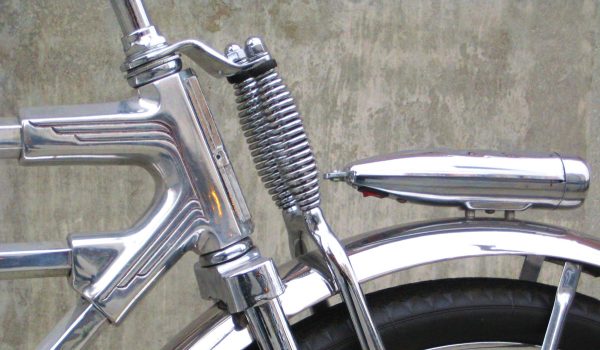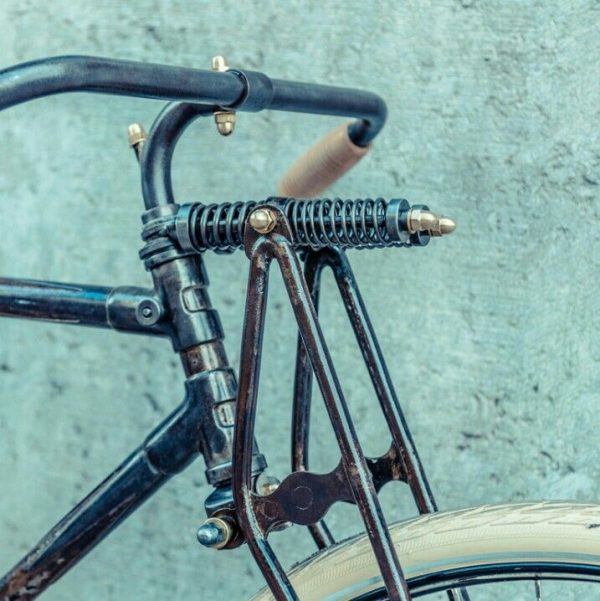
01 Nov How do bicycle springer forks work
A bicycle springer fork is one of the first types of suspension forks. Vintage Schwinn and Columbia bicycles commonly used springer forks. Modern springer forks are usually installed on retro-style or lowrider bicycles.
How do bicycle springer forks work?
The springer fork is one of the most common types of forks used on modern bicycles. It’s also known as a “rocker arm” or “rocker pivot.” This type of fork was very popular in the early days of bicycle development and is still used today on retro bikes. Springer forks are also used on lowrider bikes (which often have multiple suspension components) and chopper bikes, which are customized to give riders an aggressive riding position.
Schwinn and Columbia were two of the first companies to use springer forks. They were originally designed for lowrider bicycles, but have since been adapted for retro-style and lowrider bicycles as well.
Schwinn was one of the first companies to use springer forks on its bicycles in 1961, with the introduction of their Sting-Ray model. Columbia followed suit in 1962 with their own version called the Black Shadow. These bikes are still popular among collectors today due to their unique design and construction techniques that are used in modern manufacturing processes today.
Modern springer forks are usually installed on retro-style or lowrider bicycles
Springer forks are generally used on retro-style bicycles, which have a bit of an old-timey feel to them. These are often found in the hands of hipsters and other people who want to look cool while riding around town.
Springer forks also make great additions to lowrider bikes, which are characterized by their exceptionally low center of gravity. The wheels may be placed far below the seat, giving the rider an unusual vantage point from which to see his or her surroundings. Lowriders were popularized by hip hop culture in recent years, so if you ever spot one with some flashy chrome rims and a leather seat, it’s probably not hard to figure out what they’re listening to while they roll down the street!
The main components of a bicycle springer fork
The main components of a bicycle springer fork include a pair of tubes, a pair of springs and a pair of toggles. The tubes are made from steel and are hollow, with the spring going inside. The springs are also made from steel, but they’re not hollow. Alternatively, you may see them referred to as “springs”, “levers,” or “stators.”
The two ends of each spring fit into holes in the tubes on either side of the head tube (the part that holds your handlebars), with one end having an open section through which you can insert bolts to secure it all together. Those bolts should be approximately 3/8″ long (9 mm).
The two ends of each toggle fit into holes in the tubes on either side of where you would put your handlebars if you had them (or just before where these would be if you had them), again with one end having an open section through which you can insert bolts or screws to secure them all together
To adjust the length of the fork, you would use a spacer tube. A spacer tube is a threaded rod that can be screwed in or out. The thickness of the spacer tube will determine how far apart your forks are from each other. The spacer tube usually goes between the headtube and upper fork tube and is used to keep them separated when it comes time to adjust their length.
The springer fork connects to the bicycle
A springer fork connects to the bicycle through its steering tube, which extends from the headtube on the bike’s frame. The headtube is a tube at the front of your bicycle frame that holds it together. The steering tube connects your handlebars to this part of your frame and allows you to steer your bike as you ride.
Springer forks were very popular in the early days of bicycle development. They were invented by a German named Karl Springer in 1885, and they quickly became a standard on high-end bicycles worldwide. The first bikes using springer forks included Schwinns and Columbia bicycles, two of the most popular brands at the time.
Conclusion
Springer forks are used on many different types of bicycles. They can be installed on new bikes or retro bikes, and they’re often found on lowrider bicycles because they give riders the opportunity to customize their rides with unique features like springer forks. Springer forks are a popular choice for bicycle enthusiasts who want their vehicles’ suspension systems customized to fit their needs and preferences.


No Comments